Why is it that just when an aircraft manufacturer finally gets an airplane “right”, they kill it dead and sweep it under the rug like it never even happened? The Douglas DC-8-73 (part of the “Super 70” series) was the pinnacle of the DC-8 series IMHO, and it’s a shame it ended there. They were really on a roll.
Anyway, huge thanks to the friend of mine who twisted my arm to create a full set of side view templates for this amazing aircraft. I’m a much bigger fan of this airplane now than I was before I did these drawings.
Douglas DC-8-73 side view templates (passenger and freighter configurations)
The drawings below are based on my DC-8-61 side view templates. Since the -73 shared the same fuselage (and many other major components) with that aircraft, all I had to do was focus on the differences.
The major differences included an extended wing, all new engines, and an extended horizontal stabilizer.
Passenger configuration
When illustrating the passenger version, I noticed that the mid-rear exit door was smaller compared to the -61. There were also two less windows (at the rear), but that might have depended on how each airline spec’d their aircraft. I’m not entirely sure if that was a universal difference of the Super 70 or not.

Although the fuselage still looks too thin and weak to me, the larger engines and extended wing make a big difference. Especially when viewed from angles other than the side.
This might be an unpopular opinion, but I never really cared for the way earlier versions of the DC-8 looked. The 707 looked more substantial IMHO – which makes sense considering that it has a wider fuselage (12’-4” vs 11’-6”).
Fully editable 5000 x 3000 px high-resolution source files for these templates are available! Get them in JPG, PNG, PSD, and vector format.
Freighter configuration
The freighter version was officially referred to as the DC-8-73(CF). It was nearly identical to the passenger version, minus the windows and the addition of the cargo door at the forward section of the fuselage.
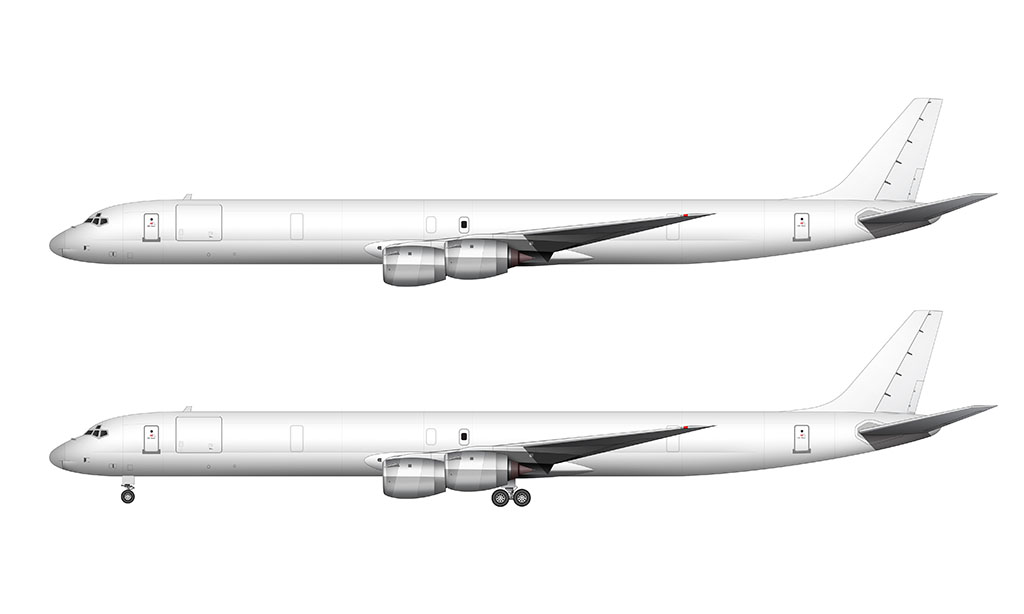
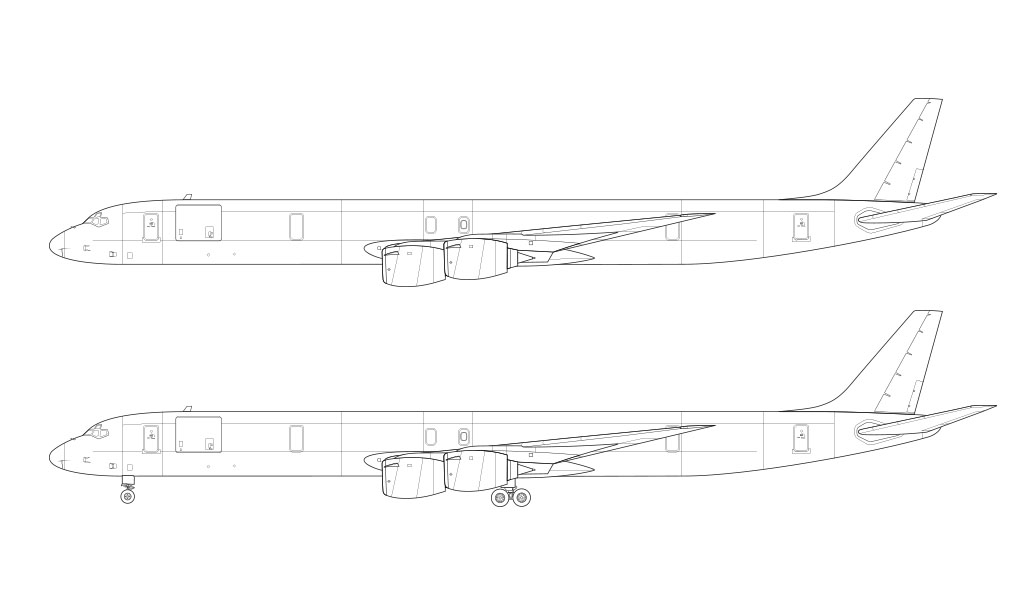
Based on my research, most aircraft had one window (located in what I assume to be a functional emergency exit over the wing).
Why the design of the DC-8-73 / Super 70 series is so interesting
Probably the most interesting thing about the DC-8-70 (Super 70) series is that they were all converted aircraft. You couldn’t buy one of these things brand new from the Douglas Aircraft Company.
Every DC-8-71/72/73 (passenger and freighter configuration) started life as a DC-8-61/62/63.
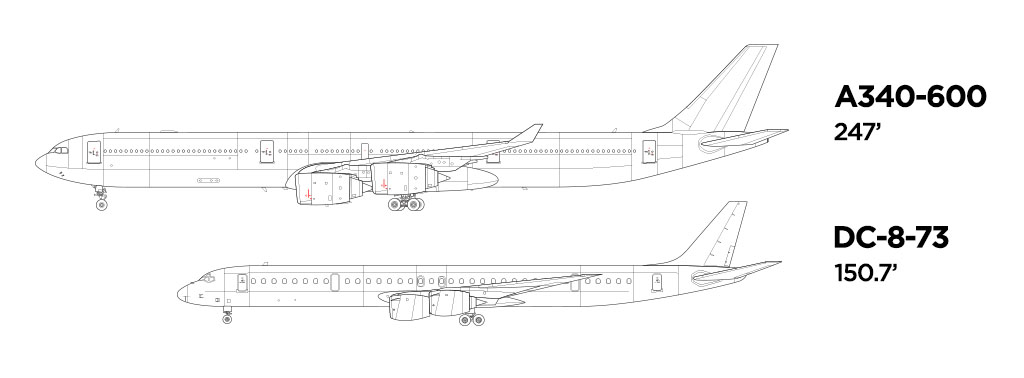
With its larger CFM56-2 engines and extended wing, it was transformed into one of the most beautiful airplanes ever made (my opinion anyway). Not bad for a design that was essentially hacked together with aftermarket parts.

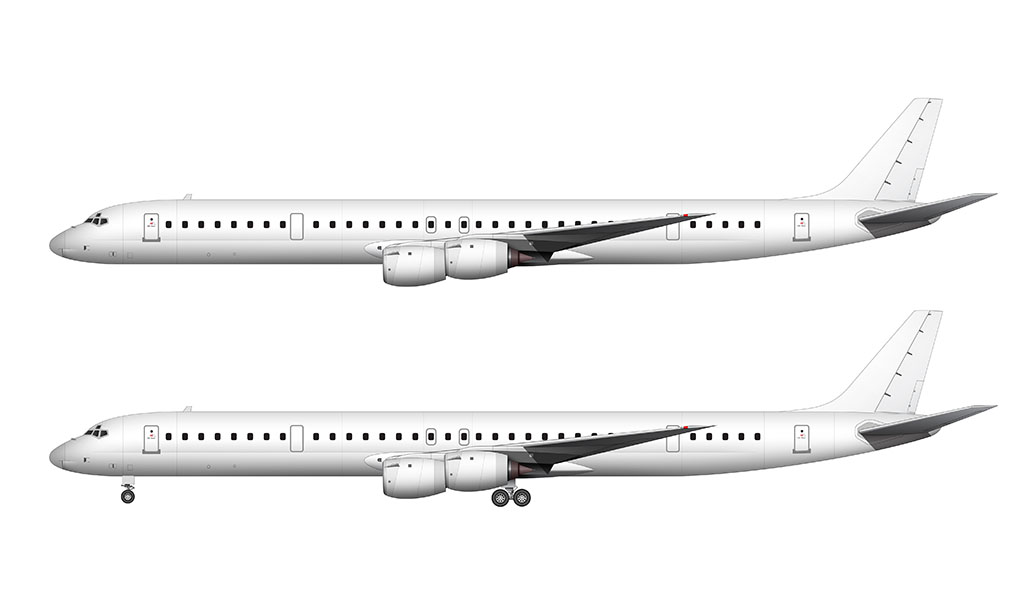
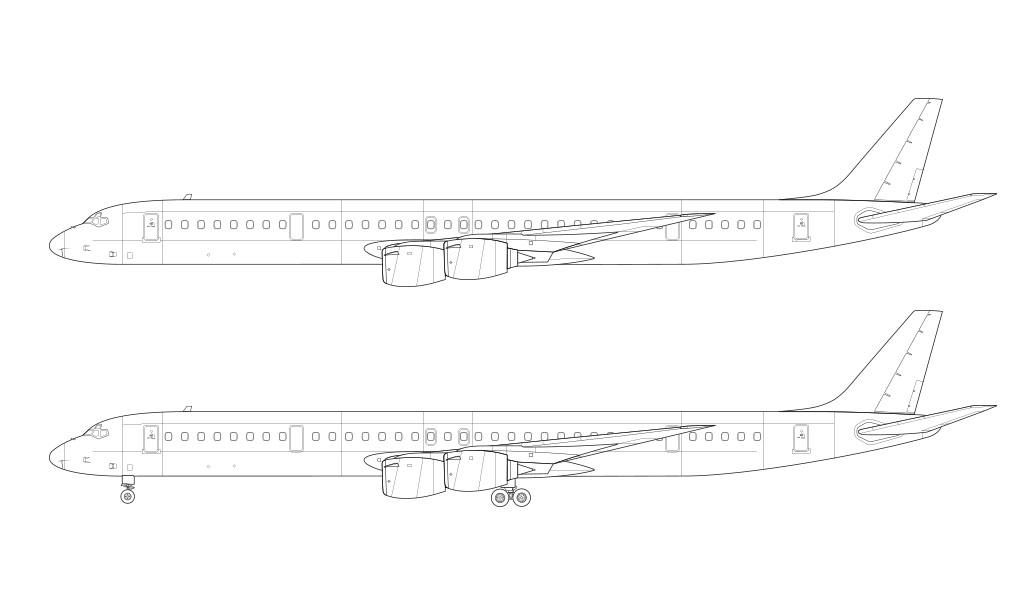
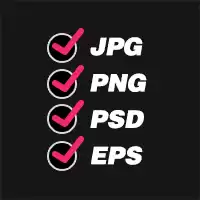
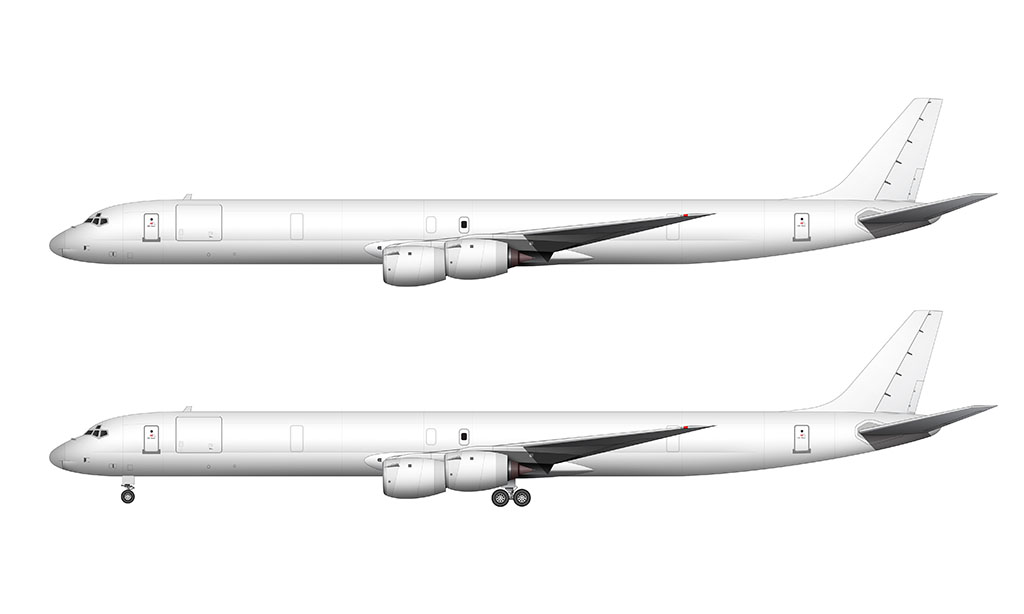
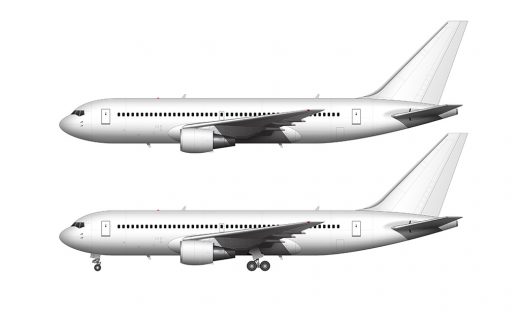
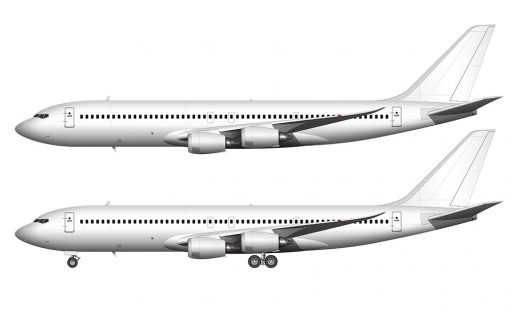
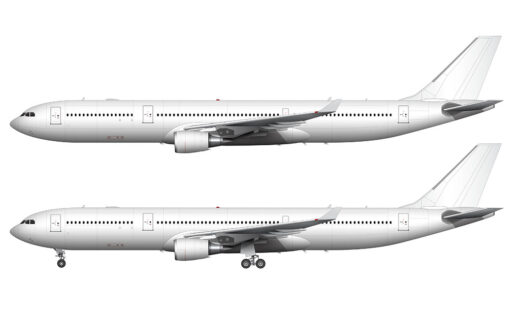
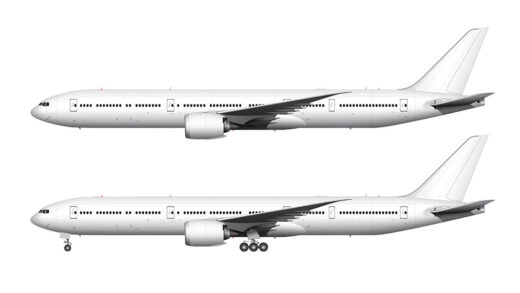
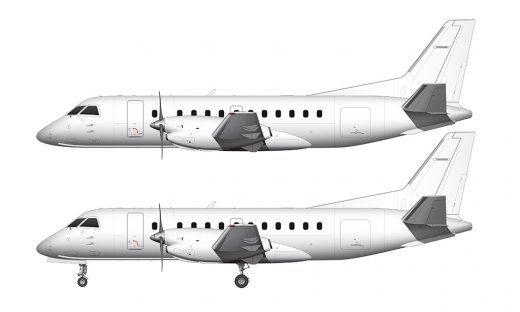
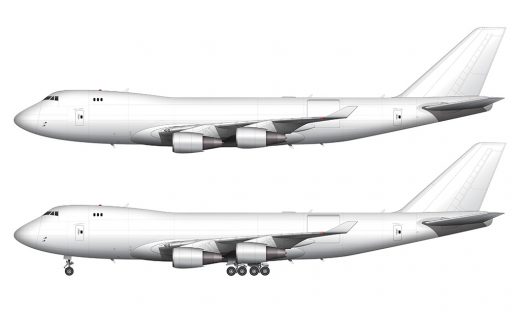
Good show, Scott. The -8 is a hell of an airplane. I never flew one but friends who have tell me it’s the only large jetliner that can lose every major system (electrical, hydraulic, pneumatic) and still fly, albeit with extra effort.
Douglas’s finest hour, before McDonnell wrecked them and later, Boeing.
Thanks Dan! Agreed. It was truly the last of its kind. I never had the chance to fly on one of these things, though I was a teenager at the time the last one was retired here in the US. An amazing aircraft!